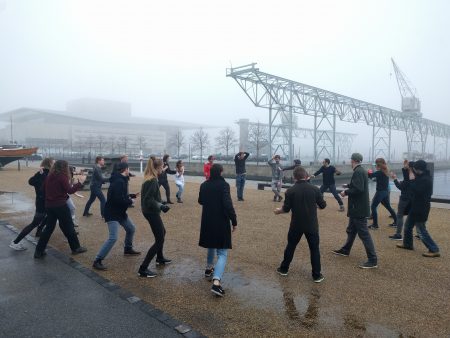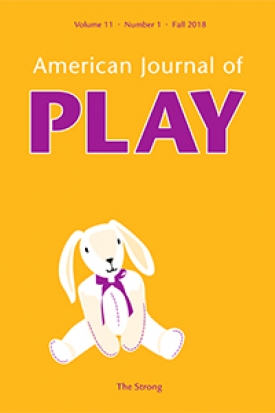The inaugural issue of the ROMchip journal on game history is out now.
My next book, Handmade Pixels, will be out in September

It’s real: My new book, Handmade Pixels: Independent Video Games and the Quest for Authenticity is now in the MIT Press fall catalog, and will be out in September 2019.
For the book I interviewed 21 developers, artists, and festival organizers, and I will be posting interviews as we get closer.
Interviewees: Celia Pearce, David Kanaga, Jason Rohrer, Jonathan Blow, Kelly Wallick, Mattie Brice, Naomi Clark, Nathalie Lawhead, Pippin Barr, Rami Ismail, Robin Hunicke, Sam Roberts, Simon Carless, Tale of Tales, Thorsten Wiedemann, Tracy Fullerton, Zach gage, Anna Anthropy, Bennett Foddy, Paolo Pedercini, Bernie Dekoven.
Thanks to all who helped, made the games, or let themselves be interviewed!
Will start blogging again
How it happened: I used to use this blog to post what I did, promote interesting things I saw, and comment on the world in general.
Then most people stopped using RSS readers, and discussions and comments moved to social media, where we are at the mercy of algorithms, discussion only happens in small groups, and history disappears quickly.
So I will start blogging again.
Question: How to make people aware of new posts? Are there RSS reader holdouts? Would you be interested in getting emails when I post something?
G|A|M|E 7/2018: Digital Games for Special Needs; Special Needs for Digital Games
For your theoretical processing, G|A|M|E 7/2018 on Digital Games for Special Needs; Special Needs for Digital Games.
- E. Gandolfi, K. Calabria, R.E. Ferdig – Introduction
- M. Dalgleish – There are no universal interfaces: how asymmetrical roles and asymmetrical controllers can increase access diversity
- L. Imbriani, I. Mariani, M. Bertolo – WaTa Fight! How situated multiplayer competitive gaming can facilitate the inclusion of low vision and blind players
- T. Plothe – The Whose View of Hue?: Disability adaptability for color blindness in the digital game Hue
- K. Schrier – Reducing Bias Through Gaming
- B. Vercellone, J. Shelestak, Y. Dhaher, R. Clements – Haptic Interfaces for Individuals with Visual Impairments
Join the Visual Game and Media Design Master’s program in Copenhagen, deadline March 1st
This is for the program I run in Copenhagen. Join us!
 Apply to the Visual Game and Media Design Master’s program at KADK in Copenhagen. The Application deadline for the 2019-2021 class is March 1st.
Apply to the Visual Game and Media Design Master’s program at KADK in Copenhagen. The Application deadline for the 2019-2021 class is March 1st.
The application process is now open for the two-year Visual Game And Media Design master’s program at KADK – the Royal Danish Academy of Fine Arts, School of Design in Copenhagen.
Visual Game and Media Design is an intensive two-year program for students wishing to do creative work in game design, visual media, and beyond. During the program, you will continually combine the hands-on creation of digital games, animations, motion graphics and visual designs with innovative conceptual approaches to game design and storyworld design.
Who can apply?
The master’s program in Visual Game and Media Design is in English, and is open to all students, Danish and International, with a relevant bachelor’s degree in fields such as graphic design, game design, animation, or 3D modeling. We encourage students with nontraditional backgrounds to apply.
More about the program and application process
To learn more about the program, and to apply, go to the website or email program head Jesper Juul, jjuul@kadk.dk
https://kadk.dk/en/programme/visual-game-and-media-design
We have frequent lectures by industry luminaries. We have recently had talks by designers such as Richard Lemarchand, Mary Flanagan, Nathalie Pozzi, Eric Zimmerman, Robert Yang, Henrike Lode, Alfred Nguyen (Forgotten Anne), Trine Laier (Cosmic Top Secret), Mikkel Pedersen (Deep Rock Galactic), and Petter Henriksen (Landfall Games).
We also organize game jams in collaboration with the local industry, including the 2019 Nordic Game Jam.
Why study at KADK in Copenhagen?
KADK is a leading academy in Scandinavia in the fields of architecture, design and conservation. It is located centrally by the Copenhagen harbor.
Copenhagen is a hub for video game development, with a vibrant English-language game development community, and home to both small and large companies such as Sybo games, IO Interactive, Playdead and Unity3D.
KADK works closely with (and is situated next to) the National Film School of Denmark, and with the professional TV and Film community in Denmark.
American Journal of Play 11/1
For your theoretical work/play: American Journal of Play 11/1
Editor’s Note
Articles
Liberating Human Expression: Work and Play or Work versus Play
J. Talmadge Wright
Desire and Doubt: The Potentials and the Potential Problems of Pursuing Play
Christine Payne
Abstract Only>Full Text>The Politics of Playtime: Reading Marx through Huizinga on the Desire to Escape from Ordinary Life
Michael J. Roberts
T. L. Taylor
Ken S. McAllister and Judd Ethan Ruggill
J. Talmadge Wright and David G. Embrick
Book Reviews
Anthony T. DeBenedet, Playful Intelligence: The Power of Living Lightly in a Serious World
Peter Grey
First Paragraph Only>Full Text>Terry Kottman and Kristin K. Meany-Walen, Doing Play Therapy: From Building the Relationship to Facilitating Change
Jodi Ann Mullen
Victoria M. Grieve, Little Cold Warriors: American Childhood in the 1950s
Peter N Stearns
Katherine H. Adams and Michael L. Keene, Paper Dolls: Fragile Figures, Enduring Symbols
Michelle Parnett-Dwyer
Sinem Siyahhan and Elisabeth Gee, Families at Play: Connecting and Learning through Video Games
Mark Chen
Dominic Arsenault, Super Power, Spoony Bards, and Silverware: The Super Nintendo Entertainment System
Joseph A. Loporcaro
Game Studies 18, 3
For your theoretical consumption, Game Studies 18/3 special issue on Queerness and Video Games.
Not Gay as in Happy: Queer Resistance and Video Games (Introduction)
by Bonnie Ruberg, Amanda Phillips
The place where queerness meets games is a site of radical potential. This introduction, and this issue, ask how we can push queer game studies beyond desires for inclusion and representation and instead embrace a queer tradition of rejecting the status quo.[more]
This article re-contextualizes debate in queer game studies over “empathy games,” represented by the games EMPATHY MACHINE (merritt k, 2014), Empathy Game (Anna Anthropy, 2015), and empathy machine (Mattie Brice, 2016), within debates over empathy in feminist theory. New terms for haptic game design aesthetics such as consent, cuteness, and the rad[more]
This essay uses a personal account of the process of creating a videogame to explore themes of queerness, disability, and labour. It intermixes theories of queer time with crip time to detail possible approaches to a queer, accessible art practice that takes seriously social inequalities yet moves towards healing.[more]
This paper examines how two BioWare-developed titles–2010’s Mass Effect 2 and 2012’s Mass Effect 3– integrate various depictions of LGBTQ-affiliated characters into a larger systemic process of thinking about populations as “war assets” to be expended, rendering queer identity as useful only when considered as a “positive” resource in the fight.[more]
Video game fans use fan fiction to critique video game narratives that exclude or misrepresent diverse gender identities in their design. Fans also recraft the video game narrative to include the representation they want to see, providing insight into how marginalized and minority players respond to diversity in games.[more]
In this article, I make the case that control and controllers — the peripherals which players use as extensions of their bodies and minds to operate videogames — are a key entry point into the project of altering the hegemonic status quo of mainstream game design. Concepts from queer game studies, intersectional feminist theory, and critical design practices (particularly, the reflective game design framework) are brought together in order to analyze and subsequently queer five core aspects of control and controllers in videogames. I make use of examples from the work of queer creators, including my own, in order to queer each aspect.[more]
This essay explores gaming’s “queer economy,” joining intimate frameworks based on the study of affect and individual psychology with wider, systemic and economic analyses of the cultural and economic meaning of videogame play.[more]
This article argues that the popular indie game Dream Daddy renormalizes the subversive gay daddy figure by replacing boundary-pushing depictions of sex with the positivity, joy, and optimism of the suburban upper- middle class. Attending to negative feelings, or “bad dreams,” in the game can wake players up to messier, kinkier, and queerer worlds.[more]
Applying Elizabeth Freeman’s concept of chrononormativity to play, this article examines time in high-stakes, professional play as a normative structure against which to recognize a set of queer temporalities, including backtracking, rewinding and resetting. A discussion of Life Is Strange illustrates both queer content and queered time in games.[more]
This article examines queer videogame modifications as a specific form of free and affective labour. Drawing on multiple modders, I describe the varying relationships between queer players, developers, and the game object through mods.[more]
Some of the earliest queer representations in mass-market games are Easter eggs, hidden artifacts that often present queer experiences as zany and noncanonical. Contrasting Easter eggs with representational politics that emphasize player choice, this article instead advocates for ambivalent design that confronts players with queer irresolvability.[more]
With its focus on video game engines, this essay proposes how a queer analysis of the labors and technologies that undergird the work in progress might strengthen more generalized discussions of the representational politics of video games, their audiences, and their production communities.[more]
Chinese Translation of “Sailing the endless River of Games”
Courtesy of the the Taiwanese DigiArts journal, here is a translation my Sailing the endless River of Games paper from DiGRA 2016,
航行於無盡的遊戲之河:以歷史上的設計模式為例.


